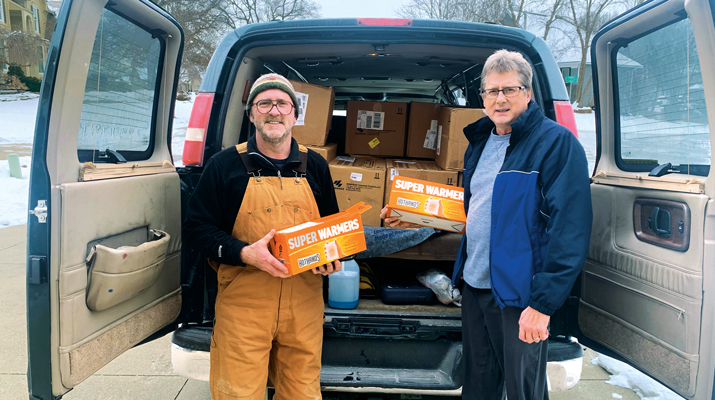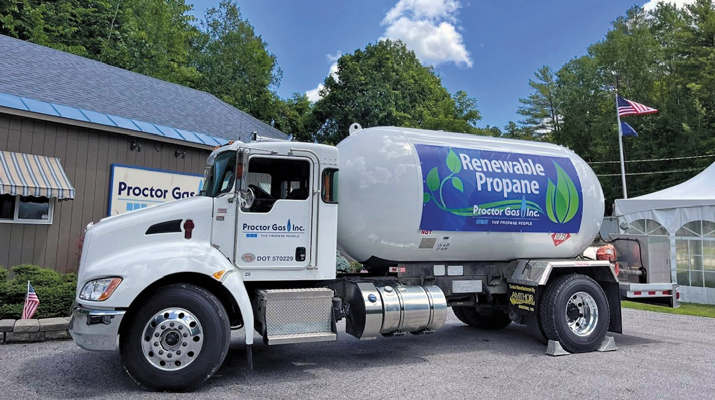Congressional testimony adds insight into new energy environment
Transcripts from a congressional hearing don’t exactly equate to light reading, but one can gain an understanding about winter supply and distribution challenges facing the propane industry from testimony given last month in Washington, D.C.
National Propane Gas Association (NPGA) President and CEO Rick Roldan represented the industry before the House Subcommittee on Energy and Power, positioned under the Committee on Energy & Commerce.
Roldan was one of eight witnesses at the hearing, which focused on fuel supply and infrastructure issues in the 21st century. It gave the propane industry an avenue to explain the predicament faced during an unforgettable winter.
The transcripts, in which NPGA cites ICF International data, clearly outline what took place this winter. The hope is members of Congress use the information to create policies that ultimately help the industry supply its customers. Here’s what caught my attention throughout the 34 pages:
■ Like the calm before the storm, propane inventory was at average levels going into the winter heating season. However, propane consumption from October 2013 to January 2014 increased by about 570 million gallons compared to the prior-year period, due to cold temperatures and crop drying demand.
■ A record 14 billion bushels of corn was harvested in 2013, requiring more than 300 million gallons of propane to fuel dryers. This was 235 million gallons above 2012 levels.
■ Agricultural sites are lacking in propane storage, forcing marketers to make multiple deliveries. Incentives are needed for farmers to boost storage, NPGA believes.
■ The shale boom has significantly increased domestic fuel production and has led to dramatic changes in energy infrastructure, encompassing new pipelines and the conversion or reversal of pipelines to carry different products. These changes have impacted traditional propane flows and contributed to the winter’s supply shortages. Ethane and a diluent for heavy crude have benefited at the expense of propane.
■ By now you’ve heard the grumblings about propane exports, but here are a few interesting statistics. U.S. propane production increased 1.4 billion gallons last year, while exports grew 2 billion gallons and to more than 20 percent of total U.S. propane production.
■ NPGA is advocating for greater transparency on pipelines that carry propane and asking the U.S. Energy Information Administration to provide the industry with more robust data sets.
■ The three largest interstate propane pipelines are owned or controlled by a single company (Enterprise Products Partners).
■ According to the Jones Act, only U.S.-flagged vessels can move shipments between U.S. ports, but none of these ships is currently available to carry propane. Gaining relief from the act in difficult situations seems only logical and would allow propane shipments to move from the production hotbed of Texas to New England and the Northeast. The chances of actually getting a waiver, however, are slim, NPGA says.
■ Crestwood’s proposed propane storage facility in upstate New York would hold 88 million gallons and help take demand pressure off facilities in Apex, N.C., and Sarnia, Ontario, Canada.
■ NPGA says it’s critical for consumers to build a relationship with their local propane supplier and buy fuel in advance. We believe this relationship-building responsibility should fall upon the propane supplier while pushing “keep-full” contracts over “will call.”
■ Sometimes it’s easy to forget the propane industry’s regional makeup. While the Midwest was the biggest area of concern this winter, the dry, warm West actually experienced an estimated drop in propane consumption of 21 million gallons.
Over the next six months and bridging the winter heating seasons, LP Gas will cover propane supply and distribution angles in depth through a special insert. The first section is found inside the April issue. We hope you find this coverage valuable, as the industry works to overcome the obstacles faced this past winter so the situation doesn’t happen again.
















